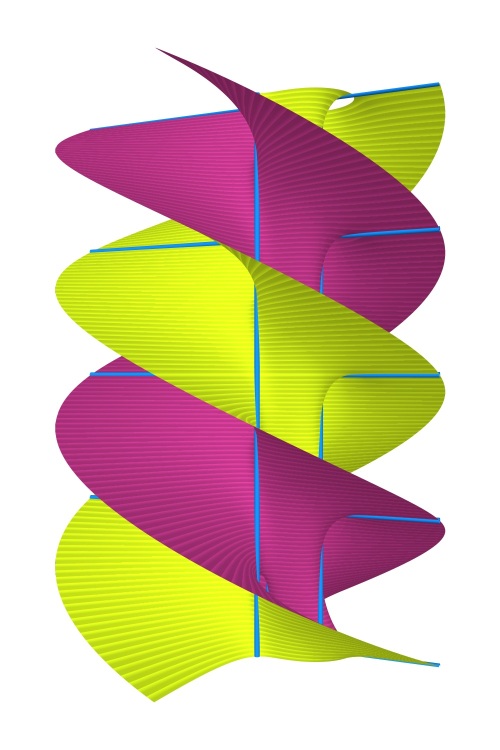The first examples of periodic minimal surfaces with helicoidal ends (besides the helicoid itself) are Hermann Karcher’s twisted Scherk surfaces from 1988.
Here are a few of them, rendered with Bryce back in 1999.

As you can see, these can be twisted more and more so that they appear to become two helicoids glued together. In this case, the two helicoids turn the same way. A few years later, Martin and I were looking at more general ways of gluing helicoids together to obtain new minimal surfaces. The model case is what we called a parking garage structure: You can describe them mathematically as superpositions of complex argument functions, like so:

Here the numbers z(k) designate the location of the axis viewed from above, and the ε(k) can be +1 or -1, depending on the spin of the helicoid.
Note that the graph of the multivalued function arg(z) is half of a helicoid (that stays on one side of the vertical axis).
An example with three helicoidal columns of the same spin, placed at -1, 0, and 1, looks like this:

If you alternate the spin, you get surfaces that untwist to higher genus helicoids, we believe.

It is also possible to place the columns off a common line, like so:

Nobody knows what minimal surfaces these untwist to.
The images above were made with Mathematics in 2001. Later I found a simple way to do this in PoVRay, which I might explain next time. Here an image from 2002:

Most people get easily lost in parking garages that have only two columns. It would be cool to have a computer game where one can walk around these more complicated structures, with the location of the columns moving in time …